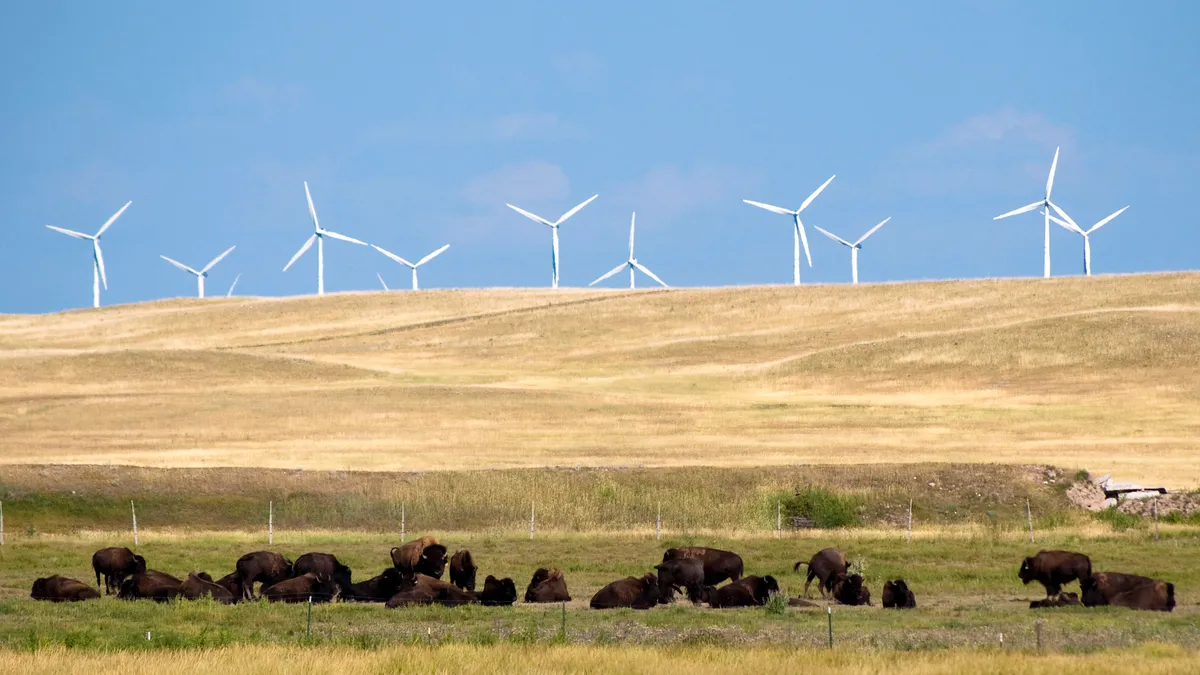Dive Brief:
- MidAmerican Energy announced it was exploring early plans for a $3.9 billion renewable energy project called Wind PRIME, following a filing with the Iowa Utilities Board last week.
- Wind PRIME, which would consist of up to 2,042 MW of new wind generation and 50 MW of solar, will be the final step in MidAmerican’s efforts to supply 100% clean energy to customers, according to Geoff Greenwood, a spokesperson for the utility. Once the project is online, renewable energy will cover 111% of MidAmerican’s annual energy demand by 2025 and will remain above the 100% mark for the next decade.
- The announcement, though sizable, seems to be the latest in a now well-established trend of utilities doubling down on renewables as economics and politics unite behind clean energy, according to Adam Wilson, an analyst specializing in renewable energy at S&P Global Market Intelligence.
Dive Insight:
MidAmerican Energy is on the cusp of achieving a 100% clean energy goal after announcing it has plans in the works to install roughly 2 GW of renewable energy by 2024.
Though the Wind PRIME project remains in early planning — site plants and locations have yet to be finalized — the approval and eventual construction of the project would represent the finish line for the 100% clean energy goal MidAmerican established in 2014, Greenwood said.
In addition to requesting approval of the Wind PRIME project, MidAmerican’s filing with the Iowa Utilities Board also seeks to launch an initiative to study future generation options, including carbon capture and sequestration, energy storage, and small modular nuclear reactors.
At more than 2 GW, the size of the announcement is “pretty substantial,” especially considering the amount of wind energy involved, Wilson said. But large renewables projects are far from out of the ordinary in today’s industry, he said — in fact, they seem to have become the norm for most larger utilities now that wind and solar are cost competitive with conventional resources.
“The technologies of wind and solar are fairly mature, and at this point it seems like a lot of it is just dictated by geography and available resources," Wilson said. "So in the Midwest, where wind speeds are generally higher, more developers are taking advantage of that compared to the west and the southwest — most of those companies are going to turn toward solar.”
Policy, too, may be pushing utilities to make larger and more frequent renewable energy announcements. Although the fate of the Biden administration’s Build Back Better plan for renewable energy expansion remains uncertain, utilities with longstanding commitments around clean energy may be trying to make clear that their commitments were internally driven by making announcements before any legislation is finalized, Wilson said.
There could be just one drawback. With so many projects coming online all at once amid global supply chain challenges, materials and labor could be hard to come by, Wilson said. But he didn’t see this preventing any planned developments from being constructed — only slowed down a bit at most.
“We’re still seeing a lot of development,” Wilson said. “Despite these headaches that the industry is currently going through, 2022 is expected to be a record year for wind and solar.”














